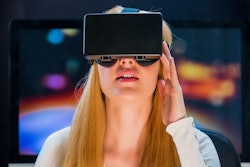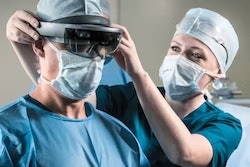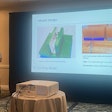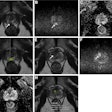Most nonsurgical neurosurgical operating room members don’t feel distracted or disrupted by mixed reality components, according to Dutch research published September 20 in World Neurosurgery.
A team led by T.M. Kos from University Medical Center Utrecht found that the use of interactive holograms of neurosurgical cases in the nonsterile intraoperative phase is not distracting for members of the nonsurgical operating room staff. It also reported that operating room staff considered mixed-reality technology to be helpful toward operating room efficiency.
“A thorough understanding of the impact of mixed reality’s implementation on the nonsurgical staff could lead to targeted improvement of the mixed reality use and, potentially, to increasing the quality of the teamwork,” Kos and colleagues wrote.
While previous studies have highlighted the potential of mixed reality technology in neurosurgery, the researchers pointed out that the technology’s impact on nonsurgical operating staff has not been thoroughly studied. They wrote that having such understanding of potential disruptive effects from using 3D holograms in the operating room could make way for further improvement of mixed reality.
The Kos team wanted to add to the literature, assessing the impact of the technology’s use in a neurosurgical operating room on nonsurgical team members. Use of the technology included preparation of the holograms by a neurosurgical team, preoperative surgical planning, and visualization in the nonsterile intraoperative phase. To make the 3D models for the holograms, the institute combined automated image segmentations from a 3D CT image analysis algorithm (Disior, Helsinki, Finland) and manual segmentation of anatomical structures, when needed. The group from there could access the algorithm and resulting holograms through a cloud environment (Lumi, Augmedit). It also visualized the holograms through mixed-reality glasses (HoloLens 2, Microsoft).
The researchers collected data from interviews with 15 nonsurgical staff members of a neurosurgical operating room team from an institution that had been using mixed-reality technology daily in the last 15 months. The staff members had an average working experience of five years.
Using binary questioning and scoring, the researchers used a 7-point Likert scale to measure perception among the staff members. These included the following scoring references: 1 = strongly disagree, 4 = neutral, and 7 = strongly agree.
Of the total, 14 reported understanding the clinical purpose of the hologram use, while 13 had used the mixed-reality system prior to the interviews. Additionally, 11 of the staff members who had previously used the system indicated that their perceptions changed about the technology and that their understanding of spatial orientation and pathology dimensions improved since using the system. This included a median score of 6 for both points.
Also, nine staff members indicated that operating room efficiency improved with the use of holograms in mixed reality.
However, the researchers also reported that the staff members overall were neutral about mixed reality’s potential to improve communications among different operating room team members and overall teamwork. This included a median score of 4 for both points.
The team also found no significant difference in how staff members perceived the technology’s impact on the participant’s level of experience.
Finally, the researchers found no significant difference in the average surgical preparation time using mixed reality compared to standard planning. They reported that the average preparation time was 48 minutes when using mixed reality compared to 52 minutes for standard planning. They also found that the estimated average time of intraoperative mixed reality use is currently seven minutes.
The study authors suggested that based on these findings, mixed reality helps improve understanding among nonsurgical staff when it comes to pathology locations and dimensions. For the communication and teamwork aspects, they wrote that mixed reality’s current scope is “still confined to the use for the surgical staff members, possibly due to its suboptimal integration into the overall operating room workflow.”
For future studies, the team called for the following: more participants, a control group without mixed reality experience, longitudinal study designs that include quantitative measurements, and validation of a questionnaire that could be used as a gold standard by all centers.
The full report can be found here.



















